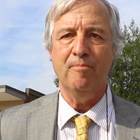With the October releases coming up, we should keep in mind what the ARRB has already told us we will not find.

Civil Rights attorney and author of State Secret: Wiretapping in Mexico City, Double Agents, and the Framing of Lee Oswald, Bill Simpich
For those of us who research the Mexico City story, it has always been very frustrating to find that there is no organized way to find the cables and dispatches between Mexico City and Headquarters, or between these two entities and JMWAVE in Miami, except within carefully circumscribed dates.
What we have run into amounts to a CIA tutorial on how to avoid providing information that is mandated under the law.

Eusebio Azcue Lopez, former Cuban consul Mexico City
As shown below, the listing of files for JMWAVE begins on November 21, and the listing of files for HQ and Mexico City begins on October 1. Very unhelpful for putting together the Oswald story, as well as the events prior to the assassination in Miami.
But not all of the files are missing. A number of the files within this timeframe do exist – simply in a less organized format. Many memos are tucked away in various other files, such as the files on Cuban consul Eusebio Azcue in CIA microfilm, Reel 2.
In fact, it is probable that most or all of these files could have been provided by the CIA if they had simply cross-indexed the files within their own Records Integration Division.
The National Archives has the duty to index the files themselves, and send a demand to the CIA for the missing files. The Act is in effect until “the Archivist certifies to the President and the Congress that all assassination-related records have been made available to the public in accordance with this Act.”
From the ARRB Final Report in 1999:
The Review Board deemed these gaps to be significant because both CIA stations played roles in U.S. operations against Cuba.
The cable traffic that the Review Board reviewed in the CIA’s sequestered collection commences on October 1, 1963, and contains the earliest known communication—an October 8, 1963, cable—between the Mexico City Station and CIA Headquarters concerning Lee Harvey Oswald.
1998 explaining that:
In general, cable traffic and dispatches are not available as a chronological collection and thus, for the period 26 through 30 September 1963 it is not possible to provide cables and dispatches in a chronological/package form.
During the periods in question, the Office of Communications (OC) only held cables long enough to ensure that they were successfully transmitted to the named recipient. On occasion. . .cables were sometimes held for longer periods but not with the intention of creating a long-term reference collection.
The Review Board was not able to locate cables or dispatches from the following periods:
Headquarters to Mexico City Station (September 26–30, 1963);
JMWAVE to Headquarters (September 26–November 21,1963);
Headquarters to JMWAVE (September 26–November 21, 1963);
and all traffic between the Mexico City Station and JMWAVE for the periods September 26–October 20, 1963 and November 22–December 30, 1963.
and dispatches from stations in the 1960s.
generally destroyed the temporary records in less than ninety days.
After the assassination, the Office of the Deputy Director of Plans ordered relevant CIA offices to retain cables that they would have otherwise destroyed. The HSCA used the remaining cable traffic to compile its Mexico City chronology.
Had CIA offices strictly applied the ninety-day rule, there might have been copies of cable traffic commencing as early as August 22, 1963, rather than October 1, 1963, available to CIA on November 22, 1963.
